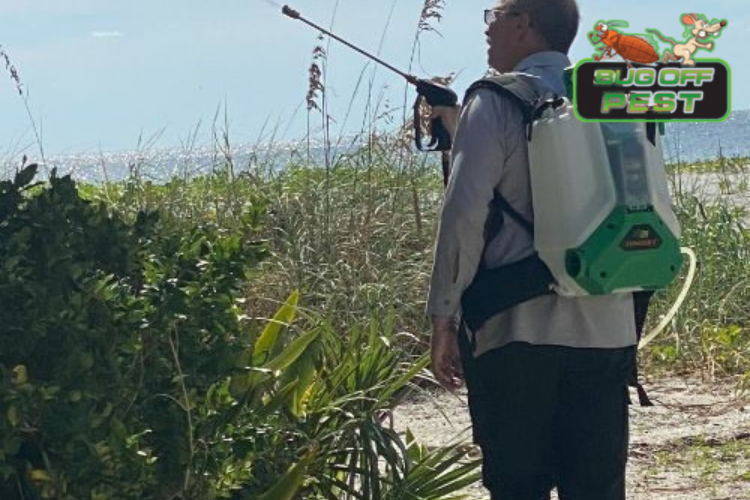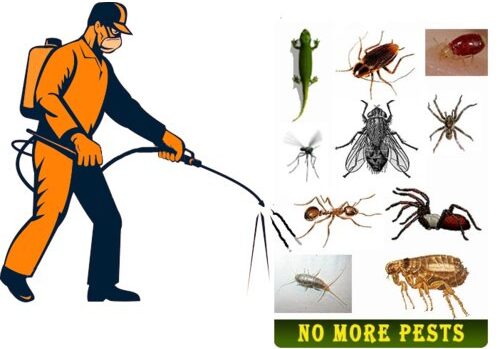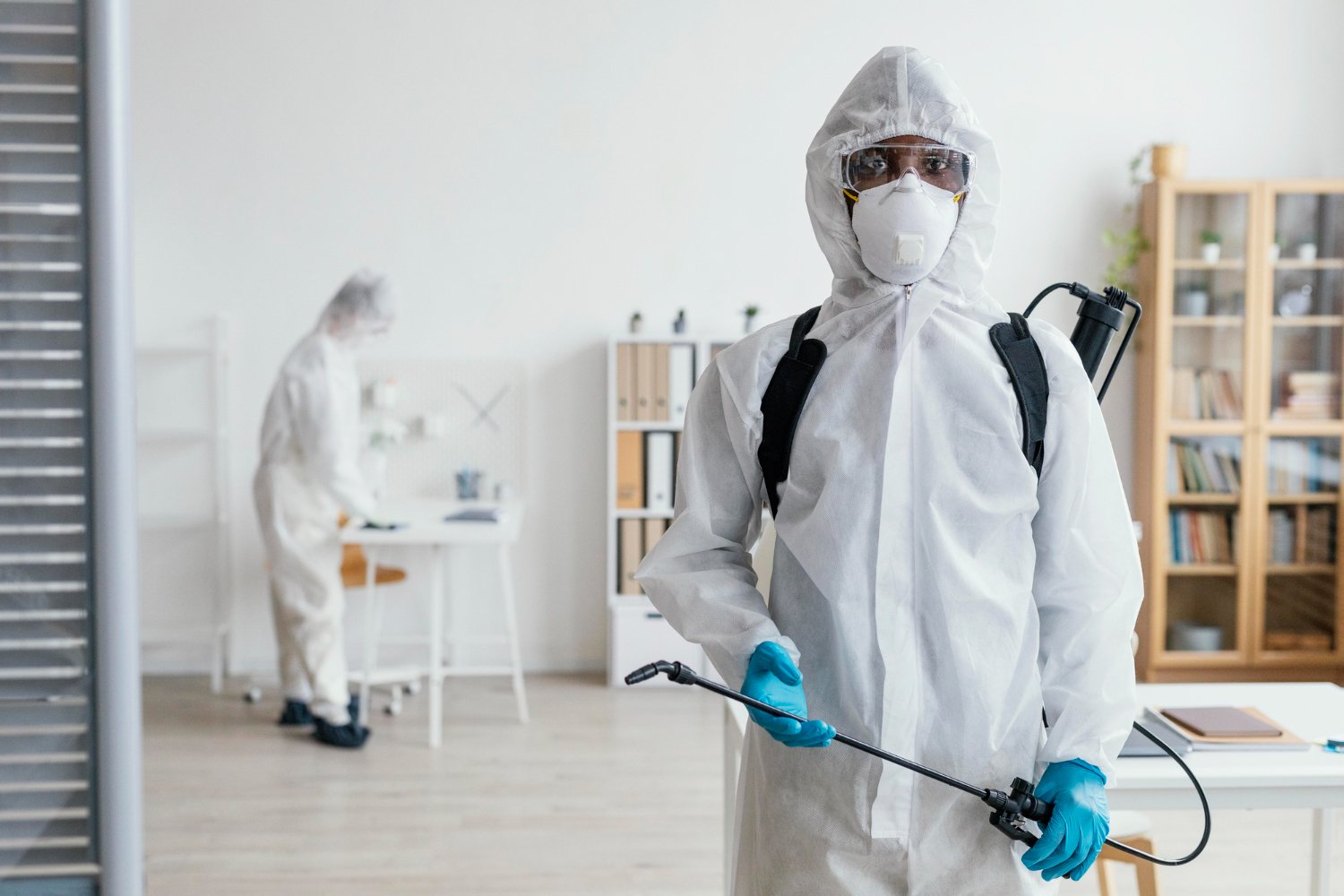Certified Commercial Pest Control Service in Port Charlotte
Certified Commercial Pest Control Service in Port Charlotte
Blog Article
Comprehensive Overview to Recognizing Insect Control Methods and Their Treatment
Understanding bug control techniques is crucial for reliable monitoring of undesirable organisms that position threats to health and wellness, agriculture, and residential or commercial property. What factors should be thought about when picking the proper insect control technique for a specific circumstance?
Review of Insect Control Methods
Parasite control techniques incorporate a variety of techniques created to handle and remove unwanted organisms that can damage human health, agriculture, and home. Effective insect administration is important for preserving the stability of ecosystems and ensuring the safety and security of food products. These methods can be generally categorized into three main approaches: social, mechanical, and organic controls.

Social control involves changing farming practices or environmental conditions to reduce bug establishment and reproduction. This method includes plant turning, cleanliness, and selecting pest-resistant plant selections. Mechanical control counts on physical obstacles or devices to stop bug gain access to or straight remove them. Examples include traps, webs, and hand-picking hazardous pests.
Organic control utilizes all-natural predators, bloodsuckers, or microorganisms to manage pest populaces. This approach highlights environmental balance and can consist of introducing useful pests, such as ladybugs or predative nematodes, to handle pest visibility.
Integrated parasite administration (IPM) combines these methods, making use of a holistic technique that stresses avoidance, tracking, and liable monitoring. By using a mix of these techniques, pest control can be a lot more sustainable and effective, decreasing dependence on chemical interventions while protecting human wellness and the atmosphere.

Chemical Insect Control Solutions
A range of chemical pest control solutions are available, providing efficient options for handling pest populations when various other approaches might fail. These solutions mainly consist of insecticides, herbicides, fungicides, and rodenticides, each developed to target certain parasites while lessening injury to non-target microorganisms.
Pesticides are especially effective versus a variety of bugs, including ants, roaches, and termites, and can be classified as call or systemic agents. Call insecticides kill pests on call, while systemic pesticides are taken in by plants, making them hazardous to bugs that eat them. Herbicides are made use of to regulate undesirable plants, whereas fungicides are necessary for handling fungal diseases that can damage crops and decorative plants.
In addition, integrated insect administration (IPM) principles ought to be used, incorporating chemical solutions with cultural, mechanical, and biological techniques for lasting bug control. This holistic method not just improves pest administration performance however additionally decreases potential ecological effects associated with chemical usage.
Organic Bug Control Methods
Biological bug control methods provide an eco-friendly alternative to chemical approaches by utilizing natural killers, parasites, or virus to take care of parasite populations. This strategy leverages the environmental partnerships between organisms, promoting a balanced community while lessening chemical residue in the like it atmosphere.
Among one of the most typical biological control methods includes the intro of all-natural opponents. For circumstances, ladybugs are used to regulate aphid populations, while parasitical wasps can target caterpillars and various other pests. These all-natural predators effectively decrease pest numbers without damaging advantageous bugs.
Furthermore, microbial representatives such as bacteria, fungi, and viruses are made use of to contaminate and eliminate particular insects. Bacillus thuringiensis (Bt), a naturally occurring germs, is extensively made use of to control caterpillars and other larvae, showcasing the performance of microbial pest control.

Physical and Mechanical Methods
Regularly employed in integrated parasite management approaches, physical and mechanical approaches work as efficient devices for controlling parasite Continued populations without using chemicals. These methods rely upon physical barriers, traps, and other mechanical gadgets to stop or get rid of pests, making them ecologically friendly choices.
Physical methods consist of using barriers such as insect netting, screens, or row covers that literally obstruct insects from accessing plants. This is specifically helpful in agricultural settings where crop defense is vital. Additionally, environment control, such as removing particles and standing water, can minimize parasite reproducing websites, thereby lessening invasions.
Mechanical methods include catches, which can be made to catch particular pests. Sticky catches and pheromone catches prevail instances that tempt and preserve pests, facilitating surveillance and control. Vacuuming is one more mechanical approach, efficient for removing bugs from interior atmospheres, particularly in situations of infestations.
Preventative Bug Administration Methods
Effective preventative pest management methods are essential for keeping healthy settings and lessening pest-related issues before they occur (Pest Control in Port Charlotte, FL). These techniques concentrate on positive steps that lower the likelihood of parasite infestations by addressing the origin triggers

One more essential technique includes correct landscaping techniques (Pest Control in check my source Port Charlotte, FL). Keeping vegetation cut and away from buildings can reduce harborage locations for bugs. Carrying out integrated bug monitoring (IPM) techniques that include keeping track of parasite populaces and utilizing organic controls can foster a balanced ecological community that naturally reduces pest numbers.
Education and learning and training for team and locals on acknowledging early indicators of bug activity are likewise crucial components of an efficient preventative program. By cultivating a setting of recognition and vigilance, companies and homeowners can greatly improve their parasite administration initiatives and safeguard their rooms against future infestations.
Verdict
Employing an Integrated Parasite Management (IPM) structure permits for the sustainable management of parasites while decreasing environmental effect. Inevitably, a thorough understanding of these diverse pest control techniques is essential for achieving successful results in bug management efforts.
Report this page